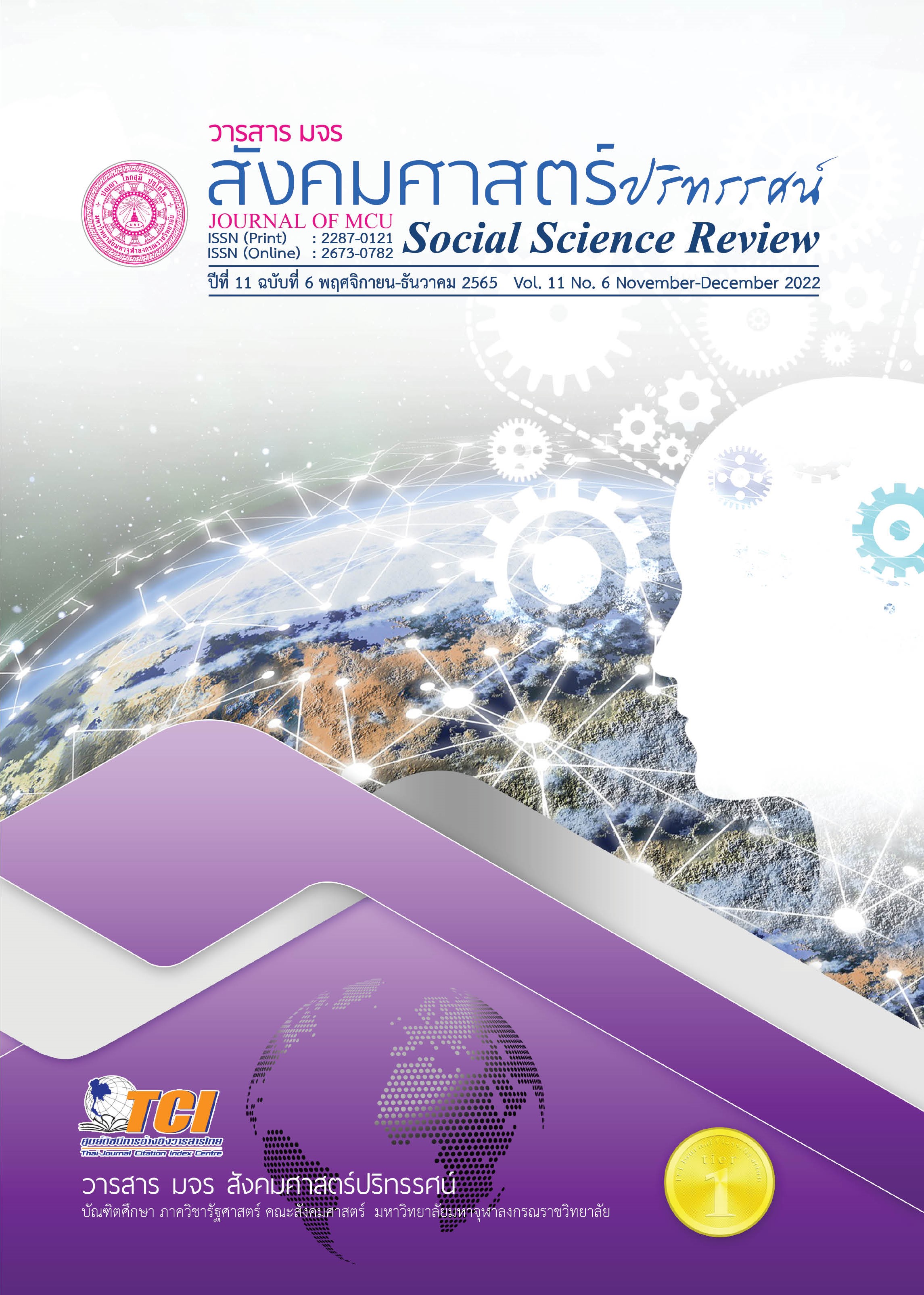การศึกษาองค์ประกอบเชิงสำรวจคุณลักษณะของแหล่งท่องเที่ยวที่ส่งผลต่อการรับรู้ตราสินค้าแหล่งท่องเที่ยวของนักท่องเที่ยว: กรณีศึกษาลุ่มน้ำทะเลสาบสงขลา อำเภอเมืองสงขลา จังหวัดสงขลา
คำสำคัญ:
คุณลักษณะของแหล่งท่องเที่ยว, การรับรู้ของนักท่องเที่ยว, ตราสินค้าแหล่งท่องเที่ยว, ลุ่มน้ำทะเลสาบสงขลาบทคัดย่อ
การศึกษานี้มีวัตถุประสงค์เพื่อระบุคุณลักษณะของแหล่งท่องเที่ยวที่ส่งผลต่อการรับรู้ตราสินค้าแหล่งท่องเที่ยวพื้นที่ลุ่มน้ำทะเลสาบสงขลา อำเภอเมือง จังหวัดสงขลา ดังนั้นการวิเคราะห์องค์ประกอบเชิงสำรวจได้ถูกนำมาใช้เพื่อจำแนกองค์ประกอบคุณลักษณะของแหล่งท่องเที่ยวซึ่งประกอบด้วย 46 คุณลักษณะ การศึกษาได้ดำเนินการกับกลุ่มตัวอย่างนักท่องเที่ยวชาวไทยจำนวน 420 คน โดยวิธีการสำรวจแบบเจาะจงและตามความสะดวก เครื่องมือที่ใช้ในการวิจัยได้ผ่านการทดสอบความเที่ยงตรงและความเชื่อมั่นในระดับดีก่อนที่จะนำไปใช้จริง ซึ่งมีค่าสัมประสิทธิ์แอลฟาของครอนบาคโดยรวมที่ระดับ 0.894 ผลการศึกษาพบว่าปัจจัยคุณลักษณะของแหล่งท่องเที่ยวลุ่มน้ำทะเลสาบสงขลาประกอบด้วย 17 องค์ประกอบหลัก ซึ่งสามารถอธิบายความแปรปรวนรวมกันได้ร้อยละ 74.153
ผลการศึกษายังพบว่า ตัวชี้วัดมีความเหมาะสมในการวิเคราะห์โครงสร้างปัจจัยโดยมีค่าไคเซอร์-เมเยอร์-โอลคิน (KMO) ในระดับ 0.599 และค่าทดสอบของบาร์ตเล็ตต์ (Bartlett’s test of sphericity) มีนัยสำคัญทางสถิติ (p < 0.001) จากการวิเคราะห์องค์ประกอบเชิงสำรวจพบว่าองค์ประกอบที่ 1 ซึ่งประกอบด้วย การเดินทางที่สะดวกสบาย ความหลากหลายของการบริการขนส่ง ความพร้อมใช้งานของป้ายบอกทางที่ชัดเจน และความหลากหลายของกิจกรรมในแหล่งท่องเที่ยว เป็นองค์ประกอบที่ได้รับการยอมรับจากนักท่องเที่ยวชาวไทยมากที่สุด โดยมีค่าความแปรปรวนอยู่ที่ 10.733% อีกทั้งได้ทำการทดสอบทีเพื่อหาปัจจัยที่มีอิทธิพลต่อการรับรู้ตราสินค้าแหล่งท่องเที่ยว พบว่ามีองค์ประกอบจำนวน 2 องค์ประกอบเท่านั้นที่มีนัยสำคัญทางสถิติ (p < 0.05) กล่าวคือ องค์ประกอบที่ 1 การเข้าถึงและกิจกรรม (p=0.008) และองค์ประกอบที่ 5 การบริหารจัดการแหล่งท่องเที่ยว (p = 0.042)
เอกสารอ้างอิง
Assaf, A. G., & Josiassen, A. (2012). European vs. US airlines: Performance comparison in a dynamic market. Tourism Management, 33(2), 317-326.
Atinafu, B., & Muuz, H. (2017). An investigation of the potential attributes for tourist destination in six selected heritage sites of South Gondar, and the challenges in availing these heritage sites for tourists. Journal of Tourism and Hospitality, 6(3), 1-10.
Boit, J. C. (2013). The role of destination attributes and visitor satisfaction on tourist repeat visit intentions to Lake Nakuru National Park. Kenya: Western Illinois University.
Chahal, H., & Devi, A. (2015). Destination attributes and destination image relationship in volatile tourist destination: role of perceived risk. Metamorphosis, 14(2), 1-19.
Chen, C.-F., & Tsai, D. (2007). How destination image and evaluative factors affect behavioral intentions. Tourism Management, 28(4), 1115-1122.
Etikan, I. et al. (2016). Comparison of convenience sampling and purposive sampling. American journal of theoretical and applied statistics, 5(1), 1-4.
Farrokhi, F., & Mahmoudi-Hamidabad, A. (2012). Rethinking Convenience Sampling: Defining Quality Criteria. Theory & practice in language studies, 2(4).
Hassan, S. B., et al. (2010). Perception of destination branding measures: a case study of Alexandria destination marketing organizations. International Journal of Euro-Mediterranean Studies, 3(2), 271-288.
Hossain, M. K., & Islam, S. (2019). An Analysis of Destination Attributes to Enhance Tourism Competitiveness in Bangladesh. African Journal of Hospitality, Tourism and Leisure, 8(2).
Kim, J.-H. (2014). The antecedents of memorable tourism experiences: The development of a scale to measure the destination attributes associated with memorable experiences. Tourism Management, 44, 34-45.
Kulvadee Lamaijeen. (2015). A Model of The Development of Community-Based Tourism Management in Designated Areas for Sustainable Tourism (Doctor of Philosophy Integrated Tourism Management). Bangkok: National Institute of Development Administration,
Mahdzar, M., & Gani, A. A. (2018). Effects of Destination Attributes on Tourists’ Behavioral Intentions to Kuala Selangor.
Marshall, M. N. (1996). Sampling for qualitative research. Family practice, 13(6), 522-526.
Mistry, R. B. (2018). Influence of Destination Attributes Importance to Tourists’ Satisfaction-Gujarat Tourism.
National Statistical Office. (2020). Domestic Travellers by Province: 2009 - 2018. Retrieved fromhttp://statbbi.nso.go.th/staticreport/page/sector/en/17.aspx
Pike, S. (2005). Tourism destination branding complexity. Journal of Product & Brand Management, 14(4), 258-259. doi:10.1108/10610420510609267
Prachyakorn Chaiyakot, & Parichart Visuthismajarn. (2012). A pattern of rural tourism in the Songkhla Lake Basin, Thailand. International Journal of Management & Information Systems (Online), 16(2), 173.
Prebensen, N. K., et al. (2014). Creating experience value in tourism: Wallingford, Oxfordshire Boston, MA : CABI.
Qu, H., et al. (2011). A model of destination branding: Integrating the concepts of the branding and destination image. Tourism Management, 32(3), 465-476.
Ragavan, N. A., Subramonian, H., & Sharif, S. P. (2014). Tourists’ perceptions of destination travel attributes: An application to International tourists to Kuala Lumpur. Procedia-Social and Behavioral Sciences, 144(20), 403-411.
Shani, A., & Belhassen, Y. (2009). Tourism Destination Development and Branding Conference: 14–17 October 2009, Eilat, Israel. Anatolia, 20(2), 471-474.
Siripen Dabphet. (2016). Destination Choice between First-time and Repeat Tourists. Journal of Business, Economics and Communications, 9(2), 39-59.
Toral, S., et al. (2018). Identification of the unique attributes of tourist destinations from online reviews. Journal of Travel Research, 57(7), 908-919.
Vodeb, K., & Nemec Rudež, H. (2017). Which attributes are important to tourists in a mature seaside destination? A case of Opatija in Croatia. Turizam: međunarodni znanstveno-stručni časopis, 65(3), 267-269.
Wong, I. A. (2011). Using Destination Attributes to Promote Event Travel: The Case of Macau. Journal of Convention & Event Tourism, 12(4), 241-252.
World Tourism Organization. (2017). Why tourism? Tourism – an economic and social phenomenon. Retrieved from http://www2.unwto.org/content/why-tourism
Yamane, T. (1973). Statistics: An introduction analysis. New York: Harper & Row.
ดาวน์โหลด
เผยแพร่แล้ว
รูปแบบการอ้างอิง
ฉบับ
ประเภทบทความ
สัญญาอนุญาต
ลิขสิทธิ์ (c) 2022 วารสาร มจร สังคมศาสตร์ปริทรรศน์

อนุญาตภายใต้เงื่อนไข Creative Commons Attribution-NonCommercial-NoDerivatives 4.0 International License.
เพื่อให้เป็นไปตามกฎหมายลิขสิทธิ์ ผู้นิพนธ์ทุกท่านต้องลงลายมือชื่อในแบบฟอร์มใบมอบลิขสิทธิ์บทความให้แก่วารสารฯ พร้อมกับบทความต้นฉบับที่ได้แก้ไขครั้งสุดท้าย นอกจากนี้ ผู้นิพนธ์ทุกท่านต้องยืนยันว่าบทความต้นฉบับที่ส่งมาตีพิมพ์นั้น ได้ส่งมาตีพิมพ์เฉพาะในวารสาร มจร สังคมศาสตร์ปริทรรศน์ เพียงแห่งเดียวเท่านั้น หากมีการใช้ภาพหรือตารางหรือเนื้อหาอื่นๆ ของผู้นิพนธ์อื่นที่ปรากฏในสิ่งตีพิมพ์อื่นมาแล้ว ผู้นิพนธ์ต้องขออนุญาตเจ้าของลิขสิทธิ์ก่อน พร้อมทั้งแสดงหนังสือที่ได้รับการยินยอมต่อบรรณาธิการ ก่อนที่บทความจะได้รับการตีพิมพ์ หากไม่เป็นไปตามข้อกำหนดเบื้องต้น ทางวารสารจะถอดบทความของท่านออกโดยไม่มีข้อยกเว้นใดๆ ทั้งสิ้น





